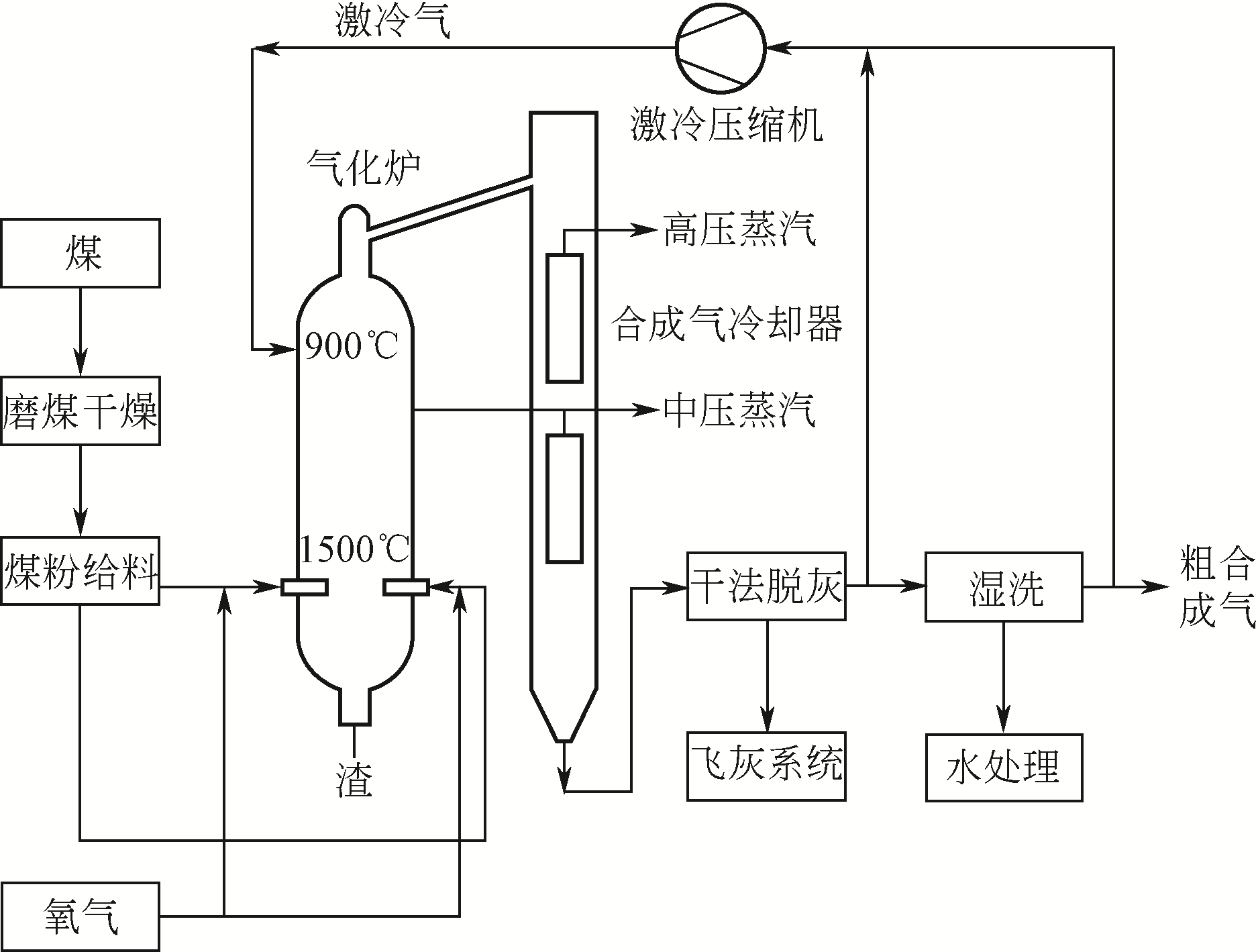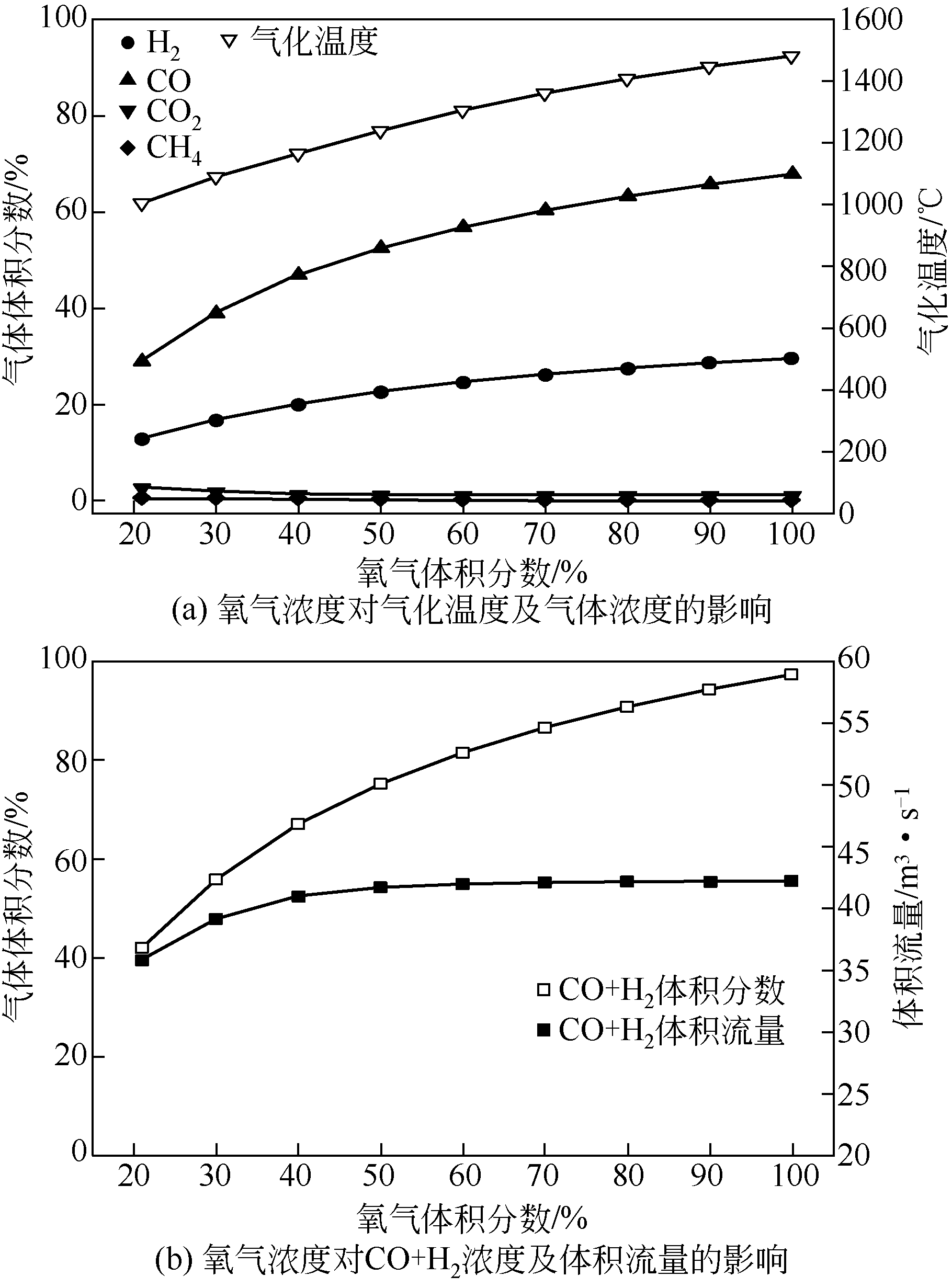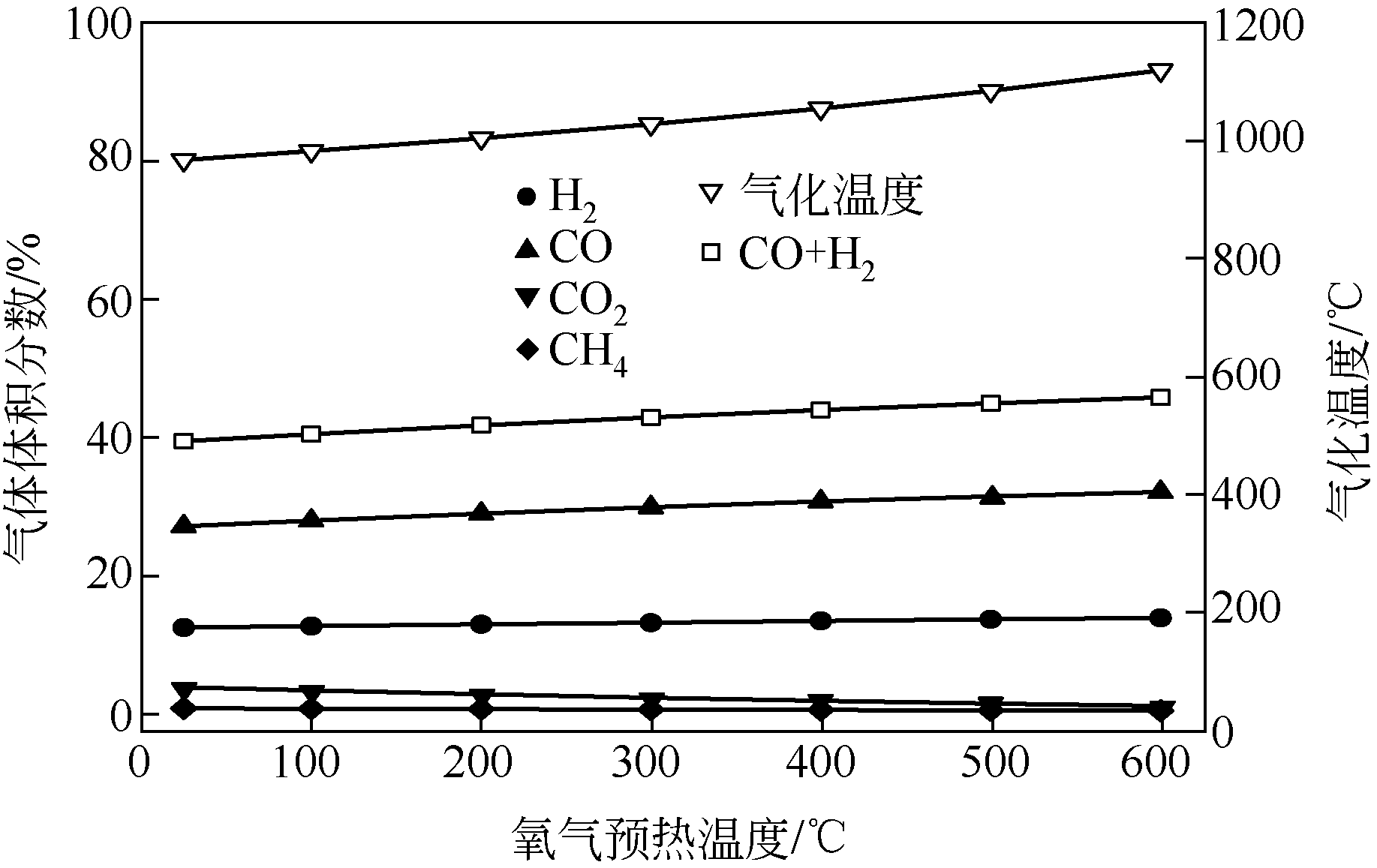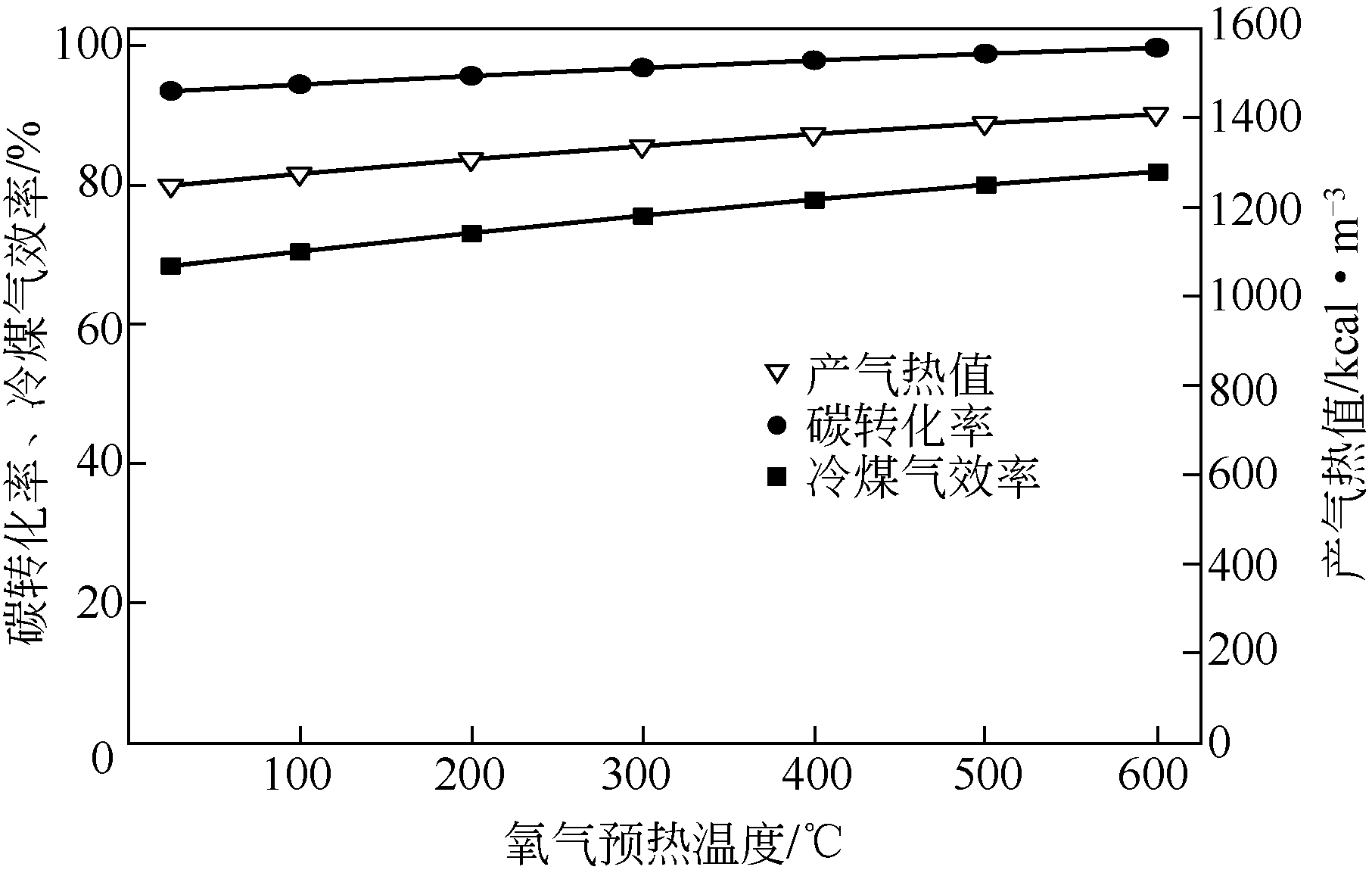| 1 |
汪寿建. 现代煤气化技术发展趋势及应用综述[J]. 化工进展, 2016, 35(3): 653-664.
|
|
WANG Shoujian. Development and application of modern coal gasification technology[J]. Chemical Industry and Engineering Progress, 2016, 35(3): 653-664.
|
| 2 |
岑建孟, 方梦祥, 王勤辉, 等. 煤分级利用多联产技术及其发展前景[J]. 化工进展, 2011, 30(1): 88-94.
|
|
CEN Jianmeng, FANG Mengxiang, WANG Qinhui, et al. Development and prospect of coal staged conversion poly-generation technology[J]. Chemical Industry and Engineering Progress, 2011, 30(1): 88-94.
|
| 3 |
刘永健, 何畅, 冯霄, 等. 煤制合成天然气装置能耗分析与节能途径探讨[J]. 化工进展, 2013, 32(1): 48-53, 103.
|
|
LIU Yongjian, HE Chang, FENG Xiao, et al. Analysis of energy consumption and energy saving approach in a coal to SNG plant[J]. Chemical Industry and Engineering Progress, 2013, 32(1): 48-53, 103.
|
| 4 |
NI Qizhi, WILLIAMS Alan. A simulation study on the performance of an entrained-flow coal gasifier[J]. Fuel, 1995, 74(1): 102-110.
|
| 5 |
LI X, GRACE J R, WATKINSON A P, et al. Equilibrium modeling of gasification: a free energy minimization approach and its application to a circulating fluidized bed coal gasifier[J]. Fuel, 2001, 80(2): 195-207.
|
| 6 |
KONG Xiangdong, ZHONG Weimin, DU Wenli, et al. Three stage equilibrium model for coal gasification in entrained flow gasifiers based on Aspen Plus[J]. Chinese Journal of Chemical Engineering, 2013, 21(1): 79-84.
|
| 7 |
SANCHEZ Cristian, ARENAS Erika, CHEJNE Farid, et al. A new model for coal gasification on pressurized bubbling fluidized bed gasifiers[J]. Energy Conversion and Management, 2016, 126: 717-723.
|
| 8 |
王辅臣, 于广锁, 龚欣, 等. 大型煤气化技术的研究与发展[J]. 化工进展, 2009, 28(2): 173-180.
|
|
WANG Fuchen, YU Guangsuo, GONG Xin, et al. Research and development of large-scale coal gasification technology[J]. Chemical Industry and Engineering Progress, 2009, 28(2): 173-180.
|
| 9 |
KUNZE Christian, SPLIETHOFF Hartmut. Modelling, comparison and operation experiences of entrained flow gasifier[J]. Energy Conversion & Management, 2011, 52(5): 2135-2141.
|
| 10 |
KONG Xiangdong, ZHONG Weimin, DU Wenli, et al. Compartment modeling of coal gasification in an entrained flow gasifier: a study on the influence of operating conditions[J]. Energy Conversion and Management, 2014, 82: 202-211.
|
| 11 |
JANG D H, YOON S P, KIM H T, et al. Simulation analysis of hybrid coal gasification according to various conditions in entrained-flow gasifier[J]. International Journal of Hydrogen Energy, 2015, 40(5): 2162-2172.
|
| 12 |
赵先国, 常杰, 吕鹏梅, 等. 生物质流化床富氧气化的实验研究[J]. 燃料化学学报, 2005, 33(2):199-204.
|
|
ZHAO Xianguo, CHANG Jie, Pengmei LYU, et al. Biomass gasification under O2-rich gas in a fluidized bed reactor[J]. Journal of Fuel Chemistry and Technology, 2005, 33(2):199-204.
|
| 13 |
刘霞, 田原宇, 乔英云. 国内外气流床煤气化技术发展概述[J]. 化工进展, 2010, 29(S2): 120-124.
|
|
LIU Xia, TIAN Yuanyu, QIAO Yingyun. Progress of entrained-bed coal gasification technology[J]. Chemical Industry and Engineering Progress, 2010, 29(S2): 120-124.
|
| 14 |
盛新, 韩启元, 汪永庆, 等. Shell煤气化装置模拟计算和操作优化软件的开发与应用[J].化工进展, 2009, 28(11): 2076-2082.
|
|
SHENG Xin, HAN Qiyuan, WANG Yongqing, et al. Development and application of simulation and optimization software for Shell coal gasification plant[J]. Chemical Industry and Engineering Progress, 2009, 28(11): 2076-2082.
|
| 15 |
谭富桃. 用化学平衡常数证明影响化学平衡的因素[J]. 化学教育, 2014, 35(9):37-39.
|
|
TAN Futao. Proving the factors influencing chemical equilibrium with chemical equilibrium constant[J]. Chinese Journal of Chemical Education, 2014, 35 (9): 37-39.
|
| 16 |
刘建峰, 邓蜀平, 蒋云峰,等. Shell干煤粉气化的模拟与分析[J]. 化工进展, 2014, 33(S1): 145-149.
|
|
LIU Jianfeng, DENG Shuping, JIANG Yunfeng, et al. Simulation and analysis of dry pulverized coal gasification in Shell gasifier[J]. Chemical Industry and Engineering Progress, 2014, 33(S1): 145-149.
|
| 17 |
张宗飞, 汤连英, 吕庆元,等. 基于Aspen Plus的粉煤气化模拟[J]. 化肥设计, 2008(3): 14-18, 26.
|
|
ZHANG Zongfei, TANG Lianying, Qingyuan LYU, et al. Pulverized coal gasification simulation based on Aspen Plus software[J]. Chemical Fertilizer Design, 2008(3): 14-18, 26.
|
| 18 |
东赫, 刘金昌, 解强, 等. 典型气流床煤气化炉气化过程的建模[J]. 化工进展, 2016, 35(8): 2426-2431.
|
|
DONG He, LIU Jinchang, XIE Qiang, et al. Modeling of coal gasification reaction in typical entrained-flow coal gasifiers[J]. Chemical Industry and Engineering Progress, 2016, 35(8): 2426-2431.
|
| 19 |
GOVIND Rakesh, SHAH Jogen. Modeling and simulation of an entrained flow gasifier[J]. AIChE Journal, 1984, 30(1): 79-92.
|
| 20 |
YU K S, LIU W W, ZHANG H X, et al. Research on gasification of shenhua coal and blended coal in industrial circulating fluidized bed gasifier[J]. Proceedings of the CSEE, 2017, 37(20): 5980-5986.
|
| 21 |
朱有健, 王定标, 周俊杰. 固定床煤气化炉的模拟与优化[J]. 化工学报, 2011, 62(6): 1606-1611.
|
|
ZHU Youjian, WANG Dingbiao, ZHOU Junjie. Simulation and optimization of fixed bed gasifier[J]. CIESC Journal, 2011, 62(6): 1606-1611.
|
| 22 |
刘忠慧, 于旷世, 张海霞, 等. 基于Aspen Plus的循环流化床工业气化炉模拟[J]. 化工进展, 2018, 37(5): 1709-1717.
|
|
LIU Zhonghui, YU Kuangshi, ZHANG Haixia, et al. Simulation of industrial circulating fluidized bed gasifier by Aspen Plus[J]. Chemical Industry and Engineering Progress, 2018, 37(5): 1709-1717.
|
 ), LI Qian2, ZHANG Jiayuan1(
), LI Qian2, ZHANG Jiayuan1( ), ZHOU Haoyu2
), ZHOU Haoyu2








